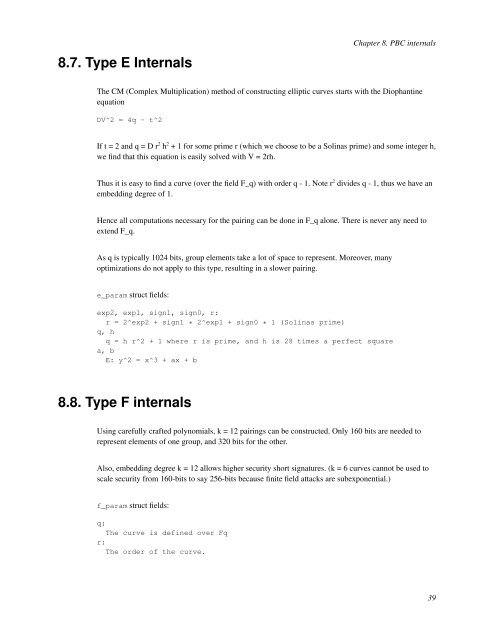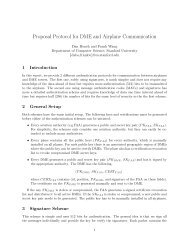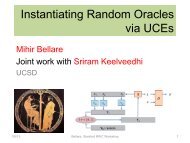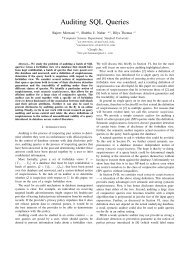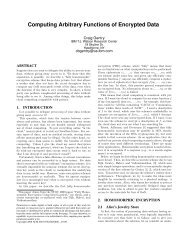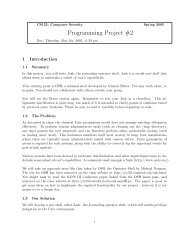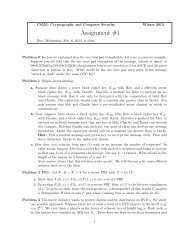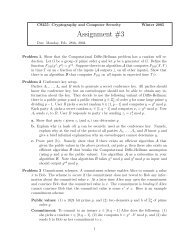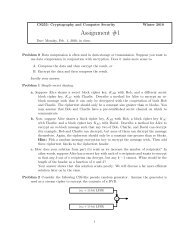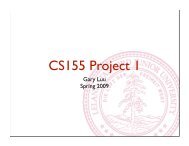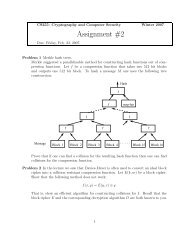PBC Library Manual 0.5.11 - Stanford Crypto Group
PBC Library Manual 0.5.11 - Stanford Crypto Group
PBC Library Manual 0.5.11 - Stanford Crypto Group
You also want an ePaper? Increase the reach of your titles
YUMPU automatically turns print PDFs into web optimized ePapers that Google loves.
8.7. Type E Internals<br />
Chapter 8. <strong>PBC</strong> internals<br />
The CM (Complex Multiplication) method of constructing elliptic curves starts with the Diophantine<br />
equation<br />
DV^2 = 4q - t^2<br />
If t = 2 and q = D r 2 h 2 + 1 for some prime r (which we choose to be a Solinas prime) and some integer h,<br />
we find that this equation is easily solved with V = 2rh.<br />
Thus it is easy to find a curve (over the field F_q) with order q - 1. Note r 2 divides q - 1, thus we have an<br />
embedding degree of 1.<br />
Hence all computations necessary for the pairing can be done in F_q alone. There is never any need to<br />
extend F_q.<br />
As q is typically 1024 bits, group elements take a lot of space to represent. Moreover, many<br />
optimizations do not apply to this type, resulting in a slower pairing.<br />
e_param struct fields:<br />
exp2, exp1, sign1, sign0, r:<br />
r = 2^exp2 + sign1 * 2^exp1 + sign0 * 1 (Solinas prime)<br />
q, h<br />
q = h r^2 + 1 where r is prime, and h is 28 times a perfect square<br />
a, b<br />
E: y^2 = x^3 + ax + b<br />
8.8. Type F internals<br />
Using carefully crafted polynomials, k = 12 pairings can be constructed. Only 160 bits are needed to<br />
represent elements of one group, and 320 bits for the other.<br />
Also, embedding degree k = 12 allows higher security short signatures. (k = 6 curves cannot be used to<br />
scale security from 160-bits to say 256-bits because finite field attacks are subexponential.)<br />
f_param struct fields:<br />
q:<br />
The curve is defined over Fq<br />
r:<br />
The order of the curve.<br />
39


